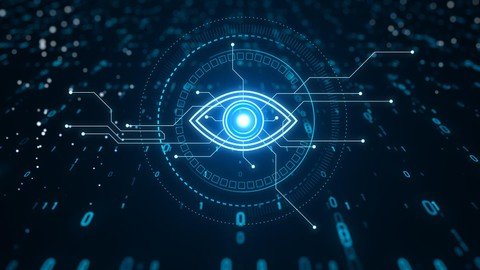
Published 6/2023
MP4 | Video: h264, 1280×720 | Audio: AAC, 44.1 KHz
Language: English | Size: 727.06 MB | Duration: 2h 3m
Master OpenCV: Unlock the Power of Computer Vision & Image Processing
What you’ll learn
What is image processing
How to use OpenCV to solve image problems
What is morphological operation
How to manipulate the images
How to add and subtract images
What are Noising and De-noising models
How to dilate and erode image
What is a color histogram
How to extract features from an image
What is Gaussian blur
Requirements
Basic knowledge of python and machine learning
Description
Unleash the power of computer vision with our comprehensive course on OpenCV and Image Processing. This dynamic course is designed for beginners and intermediate learners, delving deep into the practical aspects of computer vision, leveraging the OpenCV library.Start your journey with a brief introduction to OpenCV, understanding its history, significance, and varied applications. Swiftly move on to its installation process, setting up the coding environment in different operating systems. The course imparts foundational knowledge of image processing techniques such as image manipulation, filtering, and transformation using OpenCV.Get hands-on experience with real-world projects encompassing object detection, face recognition, optical character recognition, and more. Each project will hone your understanding of computer vision algorithms and how to implement them using OpenCV’s extensive features.Explore the exciting realm of machine learning in computer vision, applying sophisticated techniques like neural networks and deep learning. Understand how to work with video sequences, perform video analysis, and even tap into motion detection and tracking.By the end of this course, you’ll have a strong grasp on OpenCV and Image Processing techniques, propelling you towards a promising career in computer vision. Whether you’re an aspiring data scientist, a robotics enthusiast, or a software developer, this course equips you with the skills to build powerful visual recognition systems.
Overview
Section 1: Introduction
Lecture 1 Introduction
Section 2: Basic Modules in OpenCV
Lecture 2 Reading and writing an image
Lecture 3 Color transformations
Lecture 4 Addition and Subtraction (Arithmetic Operations) of images
Lecture 5 Bitwise Operations: And, Or, Not, Xor
Section 3: Image Manipulation
Lecture 6 Image Flip, Rotation, Brightness
Lecture 7 Image Resizing
Lecture 8 Image Blurring
Section 4: Image Enhancement
Lecture 9 Image Enhancement
Section 5: Noising and De-noising models
Lecture 10 Noising and De-noising models
Section 6: Morphological Processing & Algorithms
Lecture 11 Understanding morphological processing
Lecture 12 Dilation and Erosion
Lecture 13 Opening and Closing
Lecture 14 Boundary Extraction and Region Filling
Lecture 15 Convex Hull and Finding Contours
Section 7: Image Segmentation
Lecture 16 Image Segmentation
Section 8: Image/Features Descriptors
Lecture 17 Understanding Descriptors
Lecture 18 LBP and Wavelet Feature Extraction
Lecture 19 Color Histogram
Section 9: Open CV and Deep Learning: Building a Tumor Detection Model
Lecture 20 Open CV and Deep Learning: Building a Tumor Detection Model
Python developers,Machine learning enthusiasts,Data scientists,Students
Password/解压密码www.tbtos.com